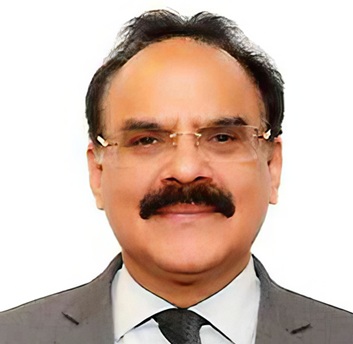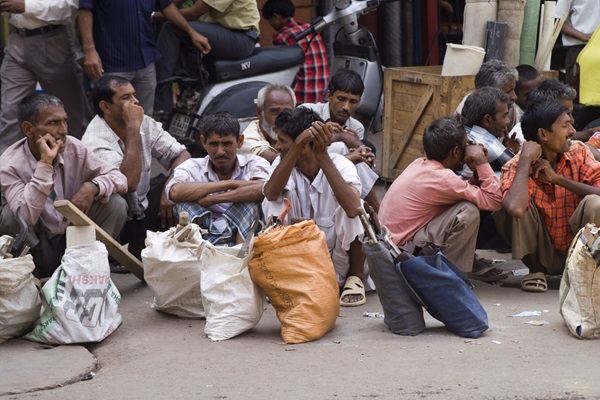.png)

Dr Arvind Mayaram is a former Finance Secretary to the Government of India, a senior policy advisor, and teaches public policy. He is also Chairman of the Institute of Development Studies, Jaipur.
August 20, 2025 at 4:26 AM IST
There is today a troubling disconnect between the numbers that dominate headlines and the reality that confronts people in their daily lives. The Indian economy, on the face of it, continues to post growth rates that impress global observers. Yet, beneath this sheen, the foundations are becoming worryingly fragile. We are witnessing growth without jobs, investment without confidence, and wealth without equity. This paradox is too stark to be ignored and requires more than incremental fixes. It demands a bold course correction and a set of visionary structural changes.
Take the question of youth unemployment. The Periodic Labour Force Survey 2022–23 puts the unemployment rate among urban youth aged 15 to 29 at over 17%. Put simply, nearly one in five young Indians in our cities is out of work. That is staggering for a country that proclaims its demographic dividend as a unique global advantage.
Even the overall unemployment rate, which hovers between 6% and 8%, remains unusually high by the standards of a developing economy. The real picture, however, may be worse. A Reuters poll of over 50 economists shows that most believe India’s official numbers significantly understate the problem, largely because the PLFS counts anyone who works even one hour in a week as “employed.” This technicality hides the scale of underemployment and the precariousness of the gig work that has become increasingly common.
Private investment, which ought to be the engine of growth and employment, has remained stubbornly weak. Despite a surge in public capital expenditure in recent years, private investment as a share of GDP has not climbed back to its pre-2013 levels. In 2023-24, it hovered around 19% of GDP, far short of the over 26% reached in 2007–08. Corporate balance sheets may look healthy, but firms are hesitant to expand capacity.
The reasons are evident: weak rural demand, global headwinds, including the so-called Trump Tantrum, and persistent policy uncertainty. The result is that the government is left pulling the investment wagon largely on its own, while the private sector watches from the sidelines.
Widening Inequality
This investment hesitancy cannot be separated from the growing income and consumption disparities.
Data from CMIE and Oxfam point to a sharp post-pandemic concentration of wealth: the richest 1% of Indians today own more than 40% of the nation’s wealth. At the same time, real wages in the informal sector, where the overwhelming majority of Indians work, have either stagnated or declined.
Growth is being driven largely by the consumption of the upper middle class and the wealthy, while the vast majority struggle merely to get by, or worse, slip backwards. Such a model is not only unjust but also economically unsustainable. According to the World Development Report-2024, published by the World Bank, India is at risk of falling into a middle-income trap.
Nowhere is this inequality more pronounced than in rural India, where a slow-burning crisis has taken hold. The average monthly income of an agricultural household remains below ₹12,000, a stark reminder of the unviability of smallholder farming.
Research by Anand Sahasranaman and Nishanth Kumar, published in 2020 before the pandemic, showed that the real incomes of the bottom 5% of rural households were shrinking by more than 4% each year between 2014 and 2019. Since then, the distress has deepened.
Rising demand for MGNREGA work, large-scale migration to cities, and recurring farmer protests all point to this fragility. In 2022 alone, over 11,000 people in the agricultural sector took their own lives — a tragic reminder that economic distress in the countryside is not just a matter of statistics but of human suffering.
The crisis of employment is not simply about numbers but also about the quality of work. A large share of new jobs is informal, poorly paid, and without social protection. Even as GDP numbers project expansion, millions remain stuck in insecure livelihoods.
Particularly worrying is the continuing decline of female labour force participation. At below 25%, it is among the lowest in the world. India’s overall labour force participation hovers around 50%, far behind China’s 70%. This is not just a gender or social concern; it is a structural economic handicap that India can ill afford.
Fiscal Weakness
Overlaying this is the weakness of the Indian state’s fiscal capacity. With a tax-to-GDP ratio of less than 12%, there is little room to finance the investments required in human capital and social protection. Public expenditure on education remains below 3% of GDP, and on health, under 2%. Both figures are far short of what is needed to underpin a modern, inclusive economy.
The consequences are visible in poor learning outcomes in schools, overstretched public hospitals, and patchy welfare delivery. India’s expenditure on R&D is abysmally low at about 0.65% of the GDP, as compared to more than 2.5% by China. Without a stronger developmental state, the promise of inclusion and upward mobility will remain hollow.
What India requires is a decisive change in direction. This is a moment that calls for political courage and economic imagination.
A national employment mission (not skill mission) that creates decent and dignified work, in both rural and urban India, is essential. Labour-intensive sectors such as textiles, food processing, construction, and tourism must receive targeted support, with an enabling ecosystem built around them. Investment in rural infrastructure such as irrigation, storage facilities, health centres and schools, must form the foundation of an inclusive revival.
At the same time, a massive investment programme to create AI tech-driven humanpower for a rapidly accelerating future should also be of the highest priority. Progressive tax reform that broadens the direct tax base, rationalises indirect taxes, and enhances equity is needed to fund these priorities. Direct income and wage support for the poorest must be viewed not as charity but as investment — investment in demand revival, stability, and social cohesion.
India’s growth story cannot be allowed to turn into a narrative of exclusion. The numbers may still suggest momentum, but the heart of the economy — its capacity to provide jobs, security, and dignity — is under strain. To drift along the current path would be to invite rising discontent and shrinking opportunity. A bold reset is no longer optional; it is imperative. Only then can growth be made to serve justice, and prosperity be shared by the many rather than captured by the few.




